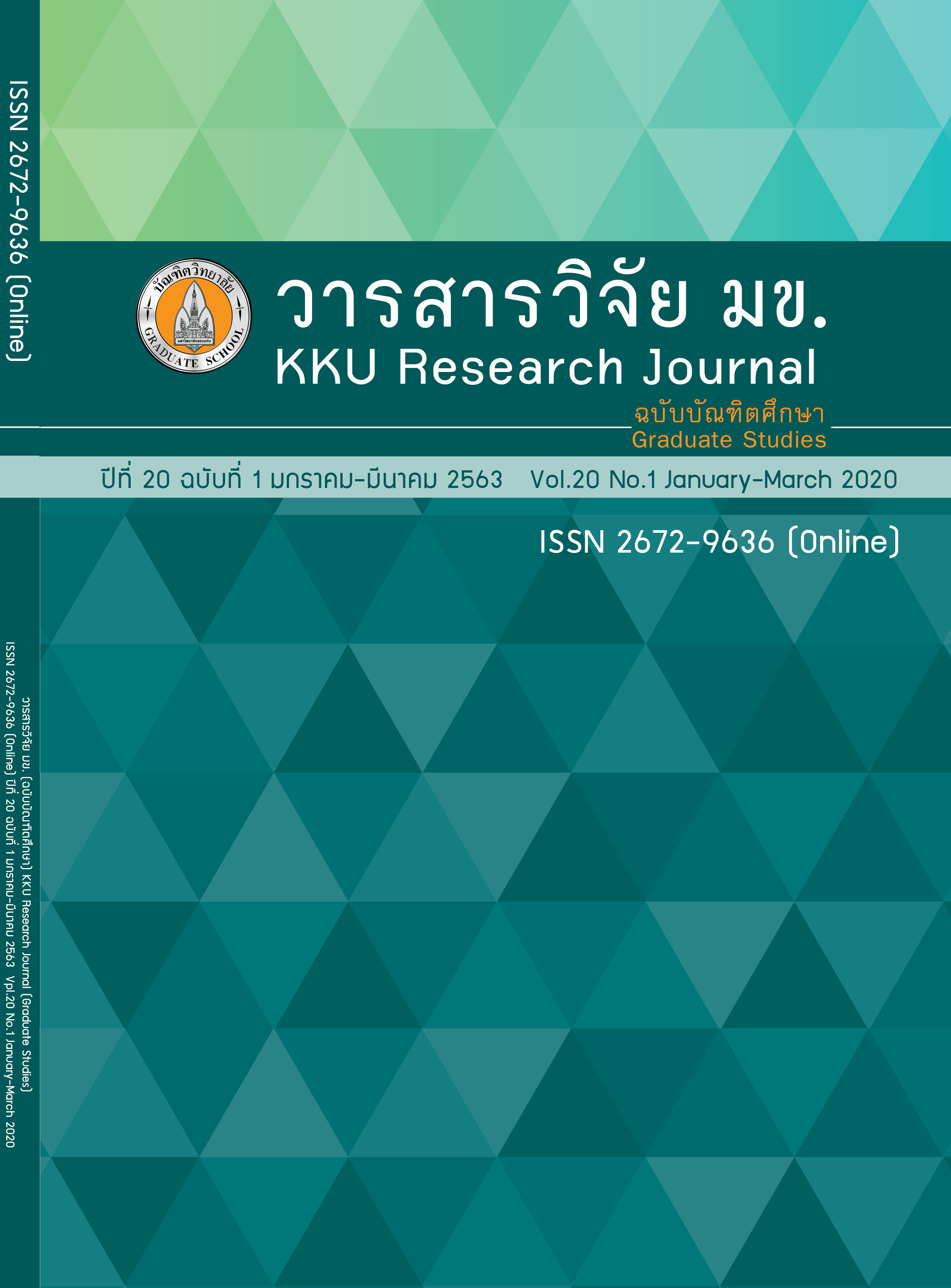SET and PTTEP Indexes Forecasting using Bayesian Belief Networks
Keywords:
Stock index forecast, Bayesian belief network, ClusteringAbstract
Statistical time-series forecasting techniques explicitly face the problem of accuracy if the data are not normal distribution. In literature, stock indexes are not normally distributed. As a result, it is in doubt that statistical forecasting techniques may not be effective for stock indexes forecasting. This thesis investigates the machine learning model called Bayesian Belief Networks (BBN) in forecasting SET index and PTTEP index in Thailand in comparison with
Box-Jenkins method, namely, MA, AR, and ARMA models. For building BBN model, the stock indexes must be transformed to P/E ratio prior to discretize using three clustering techniques, namely, K-Means, Fuzzy C-Mean, Uniform, for comparison purpose. The discrete data will be input to K2 algorithm for determine the topology of BBN. For forecasting, we daily take SET index and PTTEP index starting from January 2013 to July 2019 in implementation using root mean square error (RMSE) as accuracy metric. In this regard, BBN using K-means clustering provides the best RMSE for both SET index and PTTEP index at 12.7344 and 2.1901, respectively. For Box-Jenkins method, ARMA (3,3) and ARMA (3,2) provides the best RMSE for both SET index and PTTEP index at 13.0714 and 2.3579, respectively. As compared results, BBN provides the better accuracy than that of statistical forecasting techniques. This finding sustains our assumption.
References
Gandhmal DP, Kumar K. Systematic analysis and review of stock market prediction techniques. Computer Science Review. 2019 Nov 1; 34: 100-190.
Box G, Jenkins GM, Reinsel GC, Ljung GM. Time Series Analysis Forecasting and Control. New Jersey: rentice Hall; 1994.
Brockwell PJ, Davis RA. Introduction to time series and forecasting. 2nd ed. New York: Springer; 2002.
Cheng J, Greiner R. Learning Bayesian Belief Network Classifiers: Algorithms and System. In: Stroulia E, Matwin S, editors. Advances in Artificial Intelligence. Berlin, Heidelberg: Springer; 2001; 141–151.
Liang Wang, Libert GA. Combining pattern recognition techniques with Akaike’s information criteria for identifying ARMA models. IEEE Transactions on Signal Processing. 1994 Jun; 42(6): 1388–1396.
Xu S, Shao M, Qiao W, Shang P. Generalized AIC method based on higher-order moments and entropy of financial time series. Physica A: Statistical Mechanics and its Applications. 2018 Sep 1; 505: 1127–1138.
Cooper GF, Herskovits E. A Bayesian method for the induction of probabilistic networks from data. Mach Learn. 1992 Oct; 9(4): 309–347.
Heckerman D, Geiger D, Chickering DM. Learning Bayesian Networks: The Combination of Knowledge and Statistical Data. Machine Learning. 1995 Sep 1; 20(3): 197–243.
Zuo Y, Kita E. Up/Down Analysis of Stock Index by Using Bayesian Network. Engineering Management Research. 2012 Jul 10; 1(2): p 46-52.
Tan CS, Yong CK, Tay YH. Modeling financial ratios of Malaysian plantation stocks using Bayesian Networks. In: 2012 IEEE Conference on Sustainable Utilization and Development in Engineering and Technology (STUDENT). 2012. p. 7–12.
Malagrino LS, Roman NT, Monteiro AM. Forecasting stock market index daily direction: A Bayesian Network approach. Expert Systems with Applications. 2018 Sep 1; 105: 11–22.
Jang H, Lee J. An Empirical Study on Modeling and Prediction of Bitcoin Prices with Bayesian Neural Networks Based on Blockchain Information. IEEE Access. 2018; 6: 5427–5437.
Rajeswari K, Acharya O, Sharma M, Kopnar M, Karandikar K. Improvement in k-Means Clustering Algorithm Using Data Clustering. In: 2015 International Conference on Computing Communication Control and Automation. 2015. p. 367–369.
Aruna Kumar SV, Harish BS, Mahanand BS, Sundararajan N. An efficient Meta-cognitive Fuzzy C-Means clustering approach. Applied Soft Computing. 2019 Dec 1; 85: 105-838.



